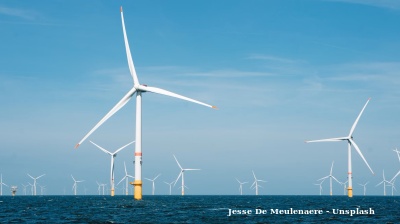Antarctica is enduring an alarming second heat wave in two years. Ground temperatures in the east of the continent surged over 50 degrees Fahrenheit (28 Celsius) above average. The heatwave could last until mid-August, highlighting how frequent such temperature spikes could because of the climate crisis.
“This heat wave is a near-record (or record) event for the region of Antarctica it’s having the biggest impact on,” Edward Blanchard, an atmospheric scientist at the University of Washington, told the Washington Post. “The heatwave’s large footprint is also remarkable,” as it makes up most of the continent.
With global temperatures rising, the poles are warming even faster. Recent data show Antarctica is heating up at twice the global average rate.
Despite the Antarctic winter – around now should be the coldest time in the world’s coldest place – with temperatures around minus-20 Celsius, this anomaly remains the most significant globally, according to weather models. For the coming 10 days, temperatures in parts of East Antarctica are expected to stay 20 to 30 Celsius above the norm. July temperatures have been consistently high, peaking 12 Celsius above average in late July.
The South Pole station has been set to experience its warmest July since 2002, with temperatures about 6.3 Celsius above average, reported Antarctic temperature analyst Stefano Di Battista.
From July 20 to 30, 2024, the station's average temperature was minus-47.6 Celsius, similar to the end of summer in Antarctica. Vostok, located at the centre of the eastern ice sheet, will also see its warmest July since 2009, about 6.5 Celsius above average.
“The heat wave on the Antarctic Plateau is extraordinary more for its duration than for its intensity, although some values are notable,” Di Battista told the Post.
Antarctic winter temperatures vary greatly due to the lack of sunlight, but this heat wave represents a significant deviation from the norm. The precise causes are still being investigated, but scientists suggest a connection to events occurring 30 kilometres above the surface in the stratosphere.
The stratosphere contains a polar vortex, a cold air band around each pole. Typically strong in the Southern Hemisphere winter, this year it has been disrupted by atmospheric waves, leading to a sudden stratospheric warming event, Amy Butler from NOAA told the Post. This has resulted in record high temperatures in the stratosphere.
The sudden stratospheric warming is also having an impact on the lower atmosphere where weather occurs. This warming has weakened the jet stream, allowing frigid air from the South Pole to move northward, affecting regions such as New Zealand, southern Africa and southern South America. Consequently temperatures in East Antarctica have risen sharply.
Much of the world’s ice is stores in the Antarctic, and if it all melts, average sea levels would rise 46 metres, say researchers,
Ben Noll, a New Zealand meteorologist, was quoted as saying that atmospheric pressures over East Antarctica have reached unprecedented levels, describing the current Southern Hemisphere weather as "a little wild."
Other factors might be exacerbating the heat wave. Antarctic sea ice cover is at its second-lowest for this time of year, just above the record lows of 2023. Sea ice helps regulate temperatures by reflecting sunlight and acting as a barrier between cold air and warmer waters, which have been unusually warm this year.
Blanchard suggested that reduced sea ice and warmer Southern Ocean waters could be contributing to the warmer winter weather in Antarctica. This trend might make significant heat waves in Antarctica more expected compared with years with average sea ice conditions.
David Mikolajczyk, a research meteorologist at the University of Wisconsin-Madison, noted that as global temperatures rise, it raises the baseline for average temperatures, making strong warming events more frequent and consequential.
The most extreme heat wave ever recorded in Antarctica occurred in March 2022, when the eastern coast saw temperatures 39 Celsius above average. Scientists on-site were seen in shorts, and intense melting of the continent’s ice occurred.
Sergi Gonzàlez Herrero from the WSL Institute for Snow and Avalanche Research observed that such heat waves are becoming less surprising, given the increasing frequency of these events in recent years.
“I’m sure more (impacts) will emerge with time as we understand (this heat wave) better, but at the moment, it’s just a case of astonishment really, what we’re seeing,” Thomas Bracegirdle, deputy science leader for the British Antarctic Survey’s Atmosphere, Ice and Climate team, said in an interview with CNN.
bneGREEN

Malaysia–Vietnam offshore wind project to deliver 2,000 MW by 2034, strengthening regional green energy links
Malaysia’s upcoming offshore wind project connecting Vietnam to Peninsular Malaysia is expected to generate up to 2,000 megawatts (MW) of clean energy by 2034, marking a major step in the nation’s renewable energy expansion

EBRD invests €16.8mn in Croatia’s first large-scale battery storage and virtual power plant
Development bank to take its first equity stake in a standalone merchant storage project.

Kyrgyzstan says neighbours “upset” by country’s lack of water
“This year we were supposed to overcome shortages, but instead, they have intensified,” deputy head of cabinet tells Uzbekistan and Kazakhstan.

EXPLAINER: What is the EU’s CBAM and how will it affect global trade from 2026?
The European Union’s Carbon Border Adjustment Mechanism (CBAM) will enter its full operational phase on January 1, 2026, marking a major shift in global climate and trade policy.

_Jason_Auch_0.jpg)


